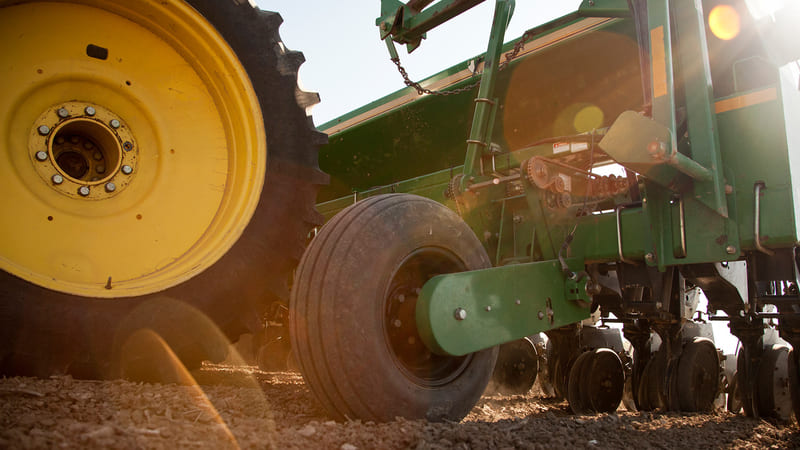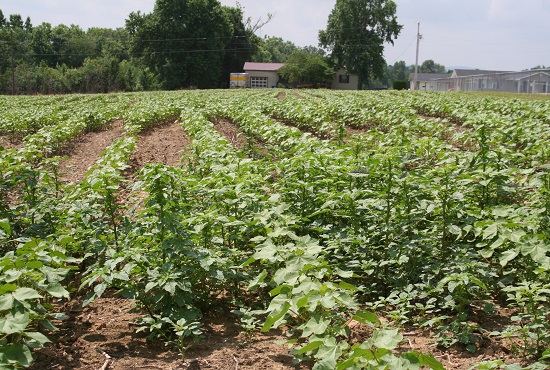Learning From History: A Perspective From Brazil
We can not predict the future, but by looking at past difficulties, we see what has enabled the cotton industry to continue to prosper in the face of hardship. The Brazilian cotton industry is an excellent example from which to learn, as their struggles and triumph over adversity corresponds to the struggles of the global industry in these current trying times. History has shown that, for Brazil, adversity is an opportunity. To fully understand this opportunity it is necessary to look back at the past to appreciate the future potential.
Brazil was an important cotton exporter in the early 1980s, but exports declined to practically nothing in the 1990s, only to rebound in a most extraordinary way in the beginning of the 21st Century, reaching over 500,000 tons last season. This steady increase in production throughout Brazil was led, to a certain extent, by the application of new and even unproven technology. This resulted in the extraordinary increase in yields per hectare witnessed over the last 25 years.
So how has this been achieved, with production rising from practically nothing in the late 1990s to today’s numbers of 1.6 million tons or 7.5 million bales?
To understand the perseverance and to see how Brazil was able to seize the opportunity, it is necessary to examine our short modern history. In doing this, one can appreciate that the production of high volume, quality cotton in Brazil is not an accident. This change required perseverance and hard work, and was accomplished without any assistance or incentives from the Brazilian Federal Government.
Learning from History
In 1981/82 cotton was planted in Brazil for the first time on larger extensions of land, which therefore required tractors and harvesting machines instead of the traditional hand-picked technique. At that time, these areas continued to be planted with the traditional Brazilian seed, and in the traditional growing areas of South of Brazil.
Following the use of these innovations, the area and production slowly increased during the following years and, in 1984/85, there was large scale cotton planting in Brazil. However, the cotton was still being grown on rather traditional land, on areas only 400 meters above sea level, and still with the traditional Brazilian seed called IAC17.
In 1985/87 it became evident that such cultivation of cotton on a large scale was not sustainable, as new diseases emerged to which the IAC17 seed offered no resistance. In addition, the high humidity and early morning mist, found in these lower regions of the country, affected the intensity of sunlight, and productivity declined. It looked like the end of the experiment to grow cotton in Brazil on a large scale, and cotton began to be imported.
In the 1987/88 season we saw improvement as farmers in the high plains, 600 meters or more above sea level, started planting cotton as a rotation crop for soy. Continued advancement only comes through exploring unique alternatives to the current situation. Because cotton consumes nitrogen, it was found to be the perfect rotation crop for soybeans, which leaves excess nitrogen in the land. Though this cotton cultivation proved successful over the next few years, most farmers in this area were still reluctant to move away, on a large scale, from their traditional soy planting, as it had been very successful.
But this move to the central region was still insufficient to offset the declining production in the southern states of Parana and Sao Paulo, principally due to the high cost of hand-picking and to the advance of the boll weevil. Brazil still had work to do if there cotton industry was to succeed.
With this declining production and pressure for the textile industry to be internationally competitive, the government liberated imports of cotton, making them duty free in 1991/92. To make matters worse, the world price of cotton collapsed, and prices in Brazil fell below the minimum guaranteed support price of the government. But without sufficient funds budgeted to finance the purchase of the crop as the law required, the government defaulted and farmers, losing considerable amounts of money, switched to alternative crops the following year. This situation of planting alternative crops is not unlike the current condition of global cotton.
The Road to Prosperity
In the next few years, the Brazilian textile industry required massive imports of cotton, especially from the newly formed Central Asian republics, who at that time were selling cotton at very competitive prices. This further reduced the incentive for growers.
Finally realizing the opportunity from this challenge which farmers were facing, in 1994/95 a few pioneers were convinced that with new seeds, resistant to the stifling diseases which had decimated previous crops, cotton cultivation should not be abandoned. A new seed was developed, ITA 90, which showed excellent resistance to the diseases then in evidence. Seeing the opportunity to be competitive with this development, the farmers started to plant cotton on their previously soy land, but this time on land higher than 800 meters above sea level. They also purchased second-hand gins and ginned the cotton on their own properties.
However, in the 1995/96 season disaster struck once again as this promising cotton was overwhelmed with a new disease called the “blue disease.” Yields were extremely low, and it looked like the great central belt cotton experiment was about to collapse yet again. In the following season, imported cotton reached an all time high, making Brazil one of the largest cotton importing countries in the world.
Thanks once again to the perseverance of the original pioneers, yields slowly started improving after adopting new spraying procedures. Adaptability is essential in difficult times. Encouraged by the new understanding of the origin of the “blue disease,” the 1998/99 season brought new investments to develop alternative varieties. Yields exploded as the farmers, together with their technical agronomic experts, came to terms with the challenges of the new areas. With considerable investment, the yields and technology continued to improve. At this time, production allowed for the first exports of Brazil’s new cotton to take place. In the 2000/01 season, imports of cotton declined to only just over 100,000 tons.
The 2001/02 season brought a set back, as the enthusiasm from the previous season’s growth had caused farmers to over-plant and over-fertilize, allowing the cotton plants to grow very tall. Undeterred during the next few years, corrections were introduced and Brazil saw farmers return as the areas and yields increased and the plant height became controlled. In fact, yields rose to over 1000 kilos of lint cotton per hectare during this period.
Conquering Financial Crisis
During the 2005/06 season, the cotton industry was stuck by a world financial crisis which was characterized by the reevaluation of the Brazilian Real against the weakening U.S. dollar. Farmers had purchased their fertilizers and insecticide prior to the crop based in dollars, but by the time the cotton was harvested the dollar had collapsed and they faced very serious losses. Many farmers lost money and this resulted in reduced planting the following season. In the 2006/07 season, with the Real stabilizing, farmers renewed their plantings and the production rose to new heights, with yields higher than ever.
The 2007/08 season has broken all records in terms of volume and yields, but once again, with yet another financial crisis upon us, a slowdown will surely occur. As we have seen during the last 25 years of cotton history in Brazil, we must expect slow periods between times of great success. Surely farmers will regroup during the next seasons and seize the opportunities which exist for further cotton expansion. Current costs of production are very high, but this affects all countries. With the potential high yields from the Brazilian farms, they may be allowed to recover faster than most other cotton producing countries.
We can be assured that further improvements in productivity and quality will ensure that Brazilian production will, after a pause, resume the growth and quality improvement. Clearly the initial obstacles of growing cotton in such a hostile area have now been overcome; now we must overcome the effects of a world recession. This is a new challenge for Brazil, and the world at large, but recession will bring opportunities, as it always does.
add graph/icon








